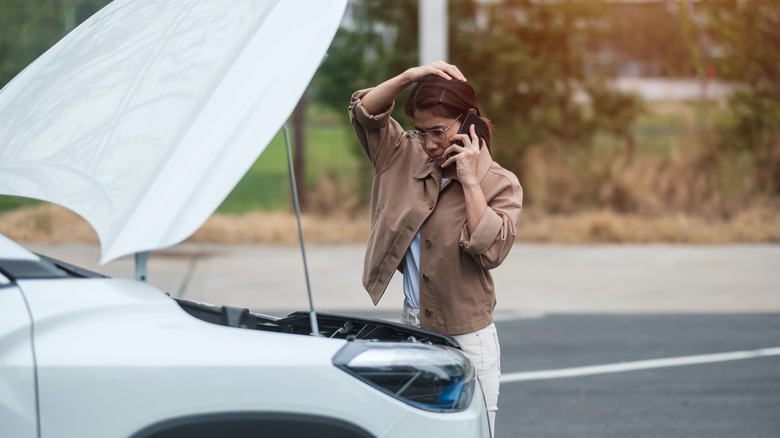While cruising along the highway, you may have seen a white towel or shirt tied to a broken-down car. This may look strange upon first glance, but it is likely a sign that a fellow driver is in need of roadside assistance.
According to the North Carolina Driver Handbook, when a car breaks down while on the road, drivers should “tie a white cloth on the radio aerial or left-door handle and raise the hood.” This alerts law enforcement and other motorists that help is required. Moreover, putting a white towel on the vehicle indicates that it has not been abandoned, minimizing — but not completely guaranteeing — the risk of the car getting towed. Not every state driving manual officially includes this piece of advice, but it’s a common practice used by roadtrippers.
As a passerby, contacting highway patrol is one of the easiest and safest steps you can take in this situation. When you call, promptly let authorities know the make and color of the broken-down vehicle, approximate location, and license plate number.
How to handle your ride breaking down

Despite meticulous preparation and planning, it’s impossible to predict all potential auto issues. Simply tossing a white towel in your trunk before you hit the highway could ultimately save you some trouble if you find yourself in a less than ideal situation.
Don’t have white towel or shirt on hand? There are some other recognizable ways to caution motorists that your car is out of commission. The Automobile Association of America, better known as Triple A, suggests tying a “brightly colored handkerchief or scarf” to your vehicle, or hanging it out the window. What’s more, you can opt to buy a set of Department of Transportation-approved warning triangles to keep in your trunk for under $30.00.
For more visibility, some state driving manuals suggest lifting your vehicle’s hood. If you are waiting for assistance, especially during late-night road trips or when the weather is bad, it’s a good idea to switch on your hazard lights for better visibility.

